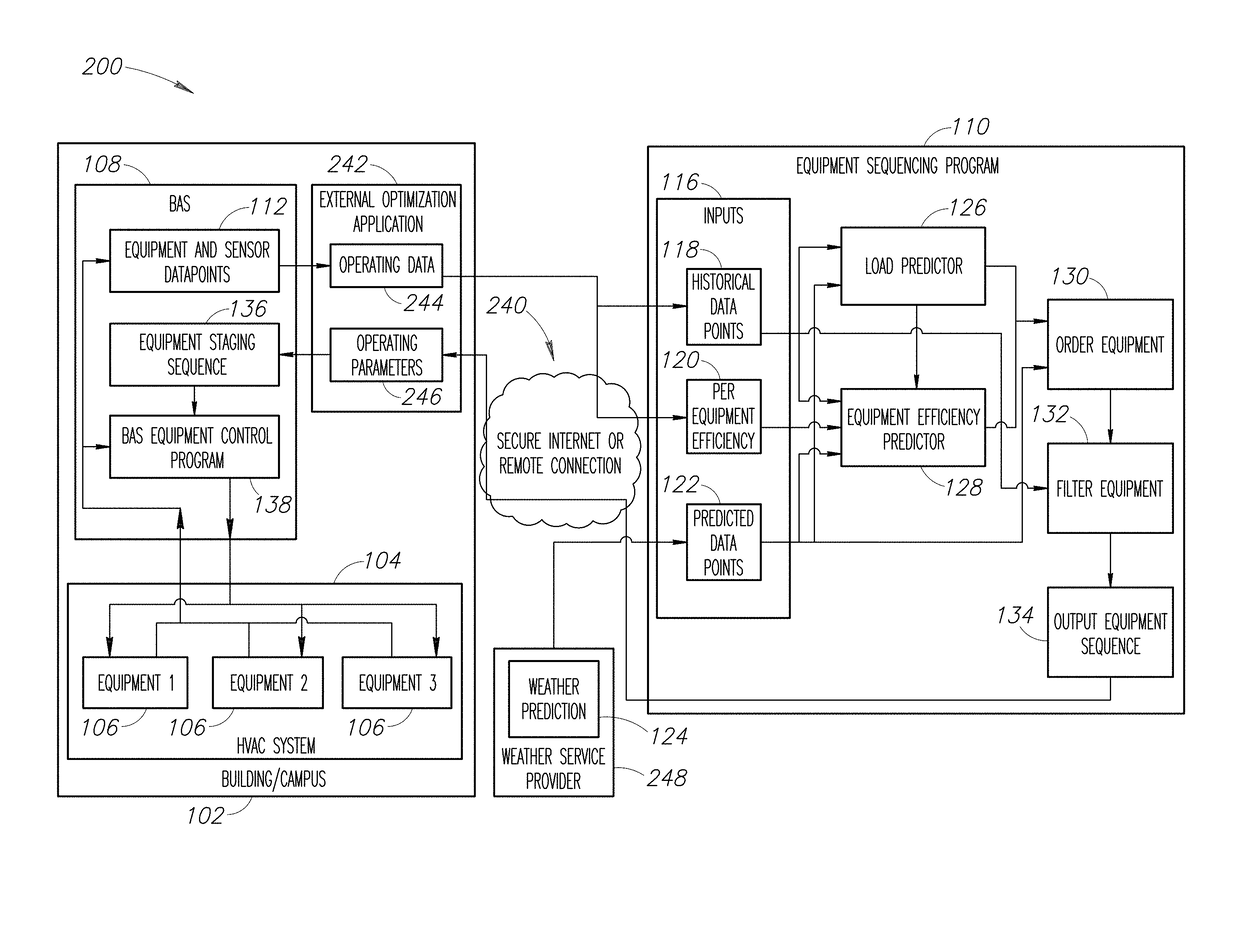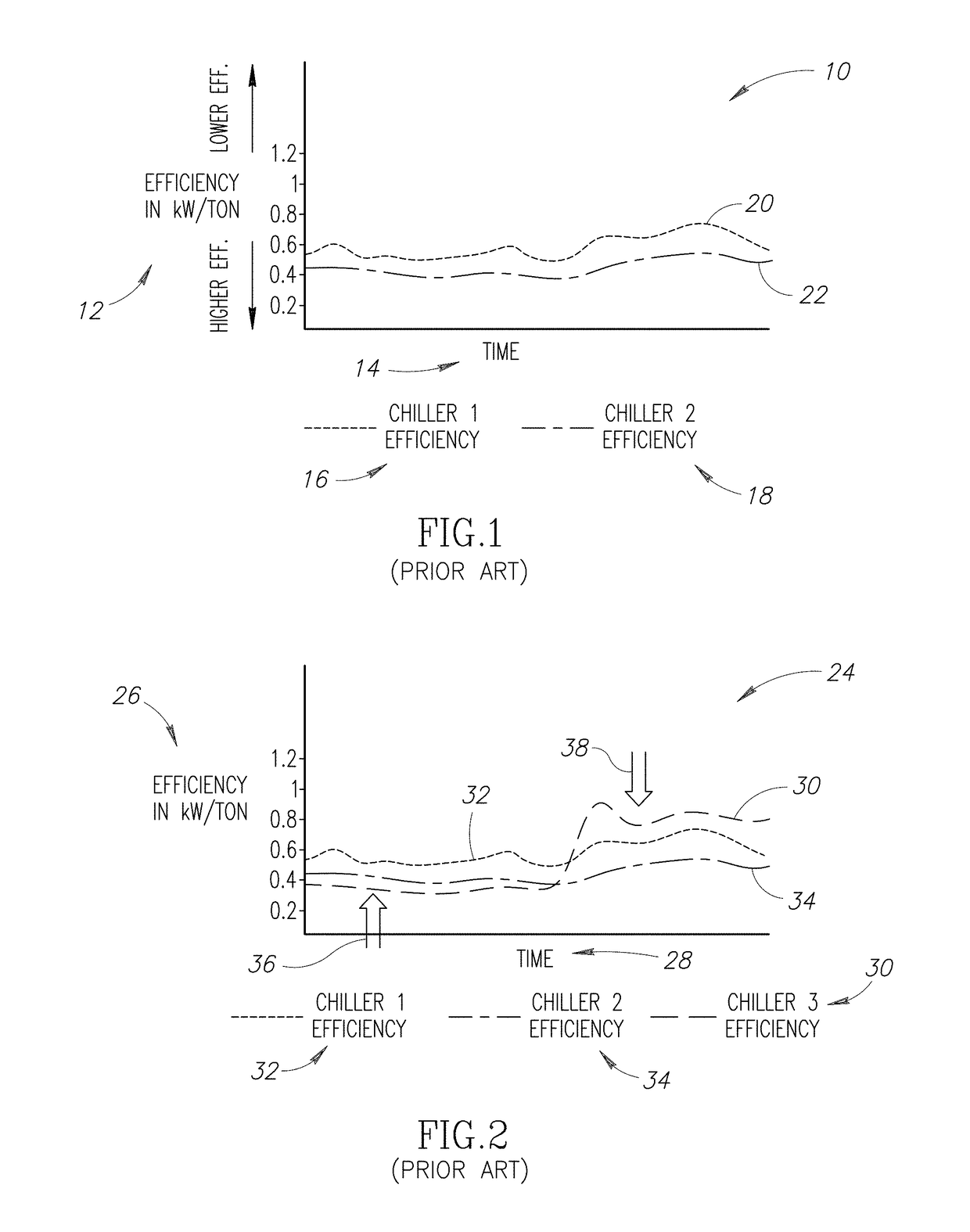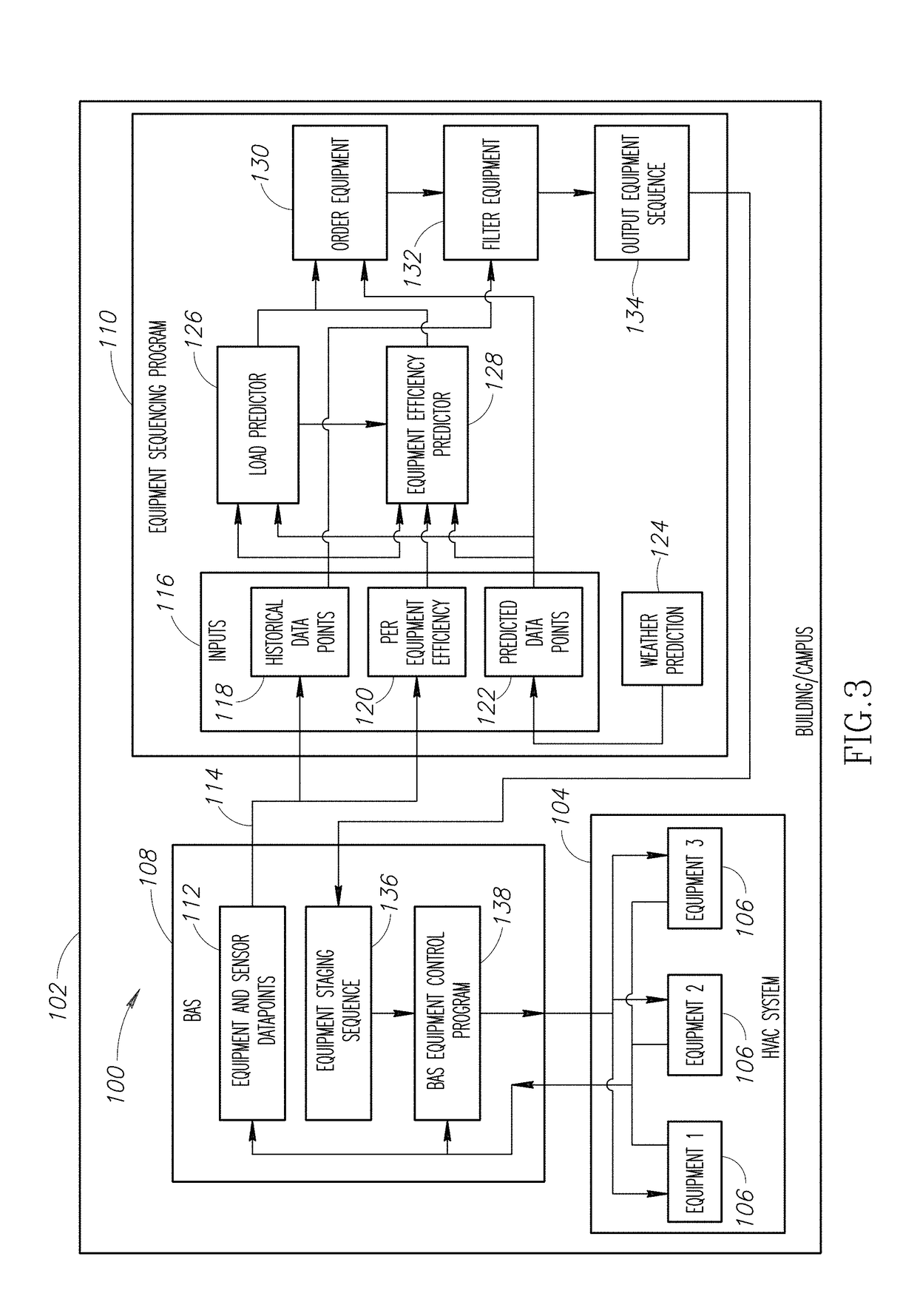Intelligent equipment sequencing
a technology of intelligent equipment and equipment sequencing, applied in the field of intelligent equipment sequencing, can solve the problems of direct affecting the energy usage of individual equipment pieces, the “stage and forget” process may be problematic, and the laborious on the part of the operator, so as to improve or optimize the overall energy efficiency
- Summary
- Abstract
- Description
- Claims
- Application Information
AI Technical Summary
Benefits of technology
Problems solved by technology
Method used
Image
Examples
Embodiment Construction
[0029]In the following description, certain specific details are set forth in order to provide a thorough understanding of various embodiments of the invention. However, one skilled in the art will understand that the invention may be practiced without these details. In other instances, well-known structures associated with HVAC systems; automation systems (e.g., building automation systems referred to as BASs); air handler units (AHUs) such as, but not limited to terminal units (also called fan coil units), packaged units or rooftop units, and various equipment used in HVAC systems such as, but not limited to, controllable valves, heating and cooling coils, various types of sensors; controllers and processors; communication networks; various computing and / or processing systems; chillers, fans, various HVAC system equipment operational parameters and set points, data points or data points; and methods of operating any of the above with respect to one or more buildings have not neces...
PUM
 Login to View More
Login to View More Abstract
Description
Claims
Application Information
 Login to View More
Login to View More - R&D
- Intellectual Property
- Life Sciences
- Materials
- Tech Scout
- Unparalleled Data Quality
- Higher Quality Content
- 60% Fewer Hallucinations
Browse by: Latest US Patents, China's latest patents, Technical Efficacy Thesaurus, Application Domain, Technology Topic, Popular Technical Reports.
© 2025 PatSnap. All rights reserved.Legal|Privacy policy|Modern Slavery Act Transparency Statement|Sitemap|About US| Contact US: help@patsnap.com



